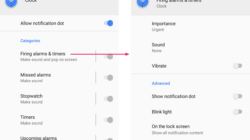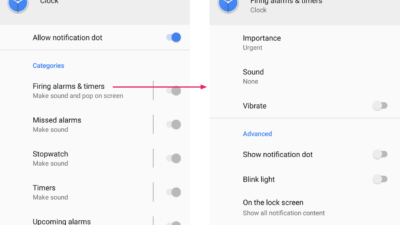Smart home upgrades for convenience and efficiency
– Embark on a journey into the world of smart home upgrades, where convenience and efficiency seamlessly intertwine. From intelligent lighting to cutting-edge security systems, this guide will illuminate the transformative power of technology in enhancing your daily life. Prepare to be captivated as we delve into the realm of smart home advancements, empowering you to create a living space that is both effortlessly comfortable and remarkably efficient. In today’s fast-paced world, the demand for convenience and efficiency in our homes has never been greater. Smart home upgrades offer an unparalleled solution, seamlessly integrating technology into your living space to streamline tasks, enhance security, and optimize energy consumption. This comprehensive guide will provide you with a roadmap to transform your home into a haven of comfort, convenience, and efficiency, empowering you to live smarter and enjoy a more fulfilling lifestyle.
Smart Lighting
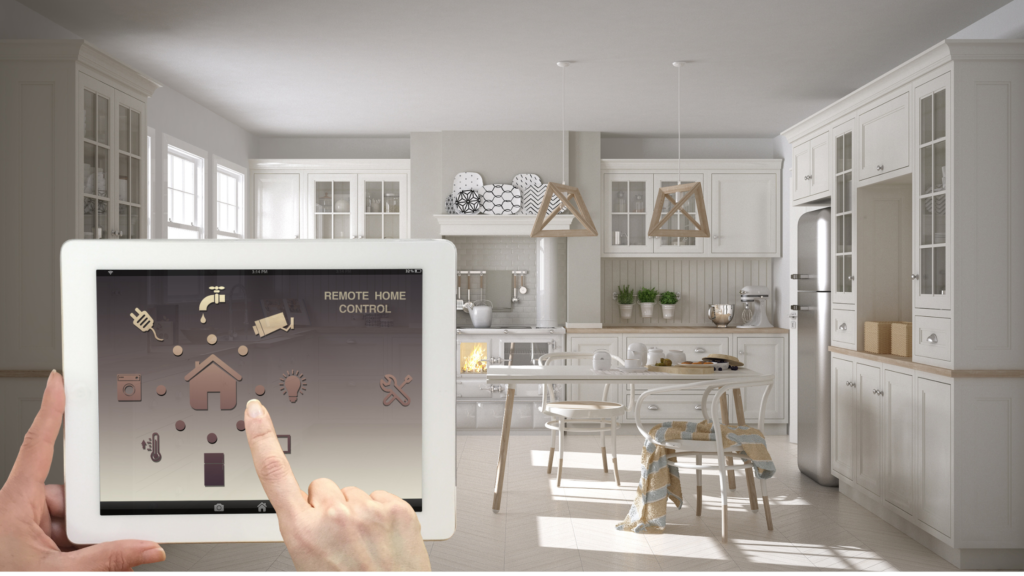 In the realm of smart home upgrades, smart lighting stands out as a beacon of convenience, energy efficiency, and enhanced ambiance. It offers a plethora of benefits that transform your living space into a haven of comfort and control. Smart lighting systems allow you to remotely control your lights from anywhere using your smartphone or voice assistant. With color-changing bulbs, you can set the perfect mood for any occasion, from vibrant hues for a party to calming pastels for relaxation. Dimmable fixtures enable you to adjust the brightness to suit your activities, creating an optimal environment for reading, working, or entertaining.
In the realm of smart home upgrades, smart lighting stands out as a beacon of convenience, energy efficiency, and enhanced ambiance. It offers a plethora of benefits that transform your living space into a haven of comfort and control. Smart lighting systems allow you to remotely control your lights from anywhere using your smartphone or voice assistant. With color-changing bulbs, you can set the perfect mood for any occasion, from vibrant hues for a party to calming pastels for relaxation. Dimmable fixtures enable you to adjust the brightness to suit your activities, creating an optimal environment for reading, working, or entertaining.
Motion-Activated Lighting
Motion-activated sensors are a game-changer for convenience and security. They automatically turn on lights when they detect movement, illuminating dark corners and providing a sense of safety. These sensors are ideal for hallways, entryways, and outdoor areas, ensuring that you never have to fumble for a light switch again.
Home Automation Integration
Smart lighting seamlessly integrates with home automation systems, offering a world of possibilities. Compatibility with voice assistants like Alexa and Google Assistant allows you to control your lights with simple voice commands. Scheduling features let you set timers to turn lights on or off at specific times, providing convenience and peace of mind. Remote control options enable you to manage your lighting from anywhere, whether you’re at home or away.
Diverse Applications
The applications of smart lighting extend far beyond basic illumination. In home security, motion-activated lights can deter intruders and provide early warning of potential threats. For entertainment, color-changing bulbs can create a captivating ambiance for movie nights or parties. And for mood lighting, dimmable fixtures can adjust the atmosphere to promote relaxation, focus, or creativity.
Privacy and Security Considerations
As with any connected device, it’s essential to consider the privacy and security implications of smart lighting systems. Choose reputable brands that prioritize data protection and implement strong encryption measures. Regularly update your devices to patch any security vulnerabilities and avoid sharing sensitive information through your smart lighting network.
Smart Home Assistants: Enhancing Convenience and Efficiency
Smart home assistants have revolutionized the way we interact with our homes, offering unparalleled convenience and efficiency. From automating tasks to providing entertainment and information, these devices have become indispensable in our daily lives.
Home Automation
Smart home assistants seamlessly integrate with various smart devices, allowing for effortless control of home appliances, lighting, and security systems. With voice commands, you can turn on lights, adjust thermostats, lock doors, and even monitor security cameras, all from the comfort of your couch.
Entertainment
Smart home assistants have transformed home entertainment. They stream music, play movies, and even control smart TVs. With voice commands, you can access your favorite shows, movies, and music without ever having to leave your seat.
Information Access
Smart home assistants are a wealth of information. They can provide real-time weather updates, news headlines, and sports scores. You can ask them questions about anything, from historical events to scientific discoveries.
Smart Thermostats
Smart thermostats are a key component of a smart home, offering convenience, energy efficiency, and remote control capabilities. They optimize heating and cooling schedules, leading to significant energy savings. For example, smart thermostats can be programmed to automatically adjust the temperature when you leave home, saving energy that would otherwise be wasted on heating or cooling an empty house.
Geofencing
Geofencing is a feature that allows smart thermostats to use your smartphone’s location to automatically adjust the temperature when you enter or leave a certain area. This ensures that your home is always at the desired temperature when you arrive, while also saving energy when you’re away.
Remote Control
Smart thermostats can be controlled remotely from anywhere with an internet connection. This allows you to adjust the temperature, change modes, and monitor energy usage, all from your smartphone or tablet.
Energy Monitoring
Smart thermostats can track your energy usage and provide detailed reports on your heating and cooling habits. This information can help you identify areas where you can save energy and reduce your utility bills.
Integration with HVAC Systems
Smart thermostats can be integrated with your HVAC system to provide even greater energy efficiency and control. For example, some smart thermostats can control multiple zones, allowing you to set different temperatures for different rooms in your home. Others can work with heat pumps and other HVAC systems to optimize energy usage.
Smart Security Systems
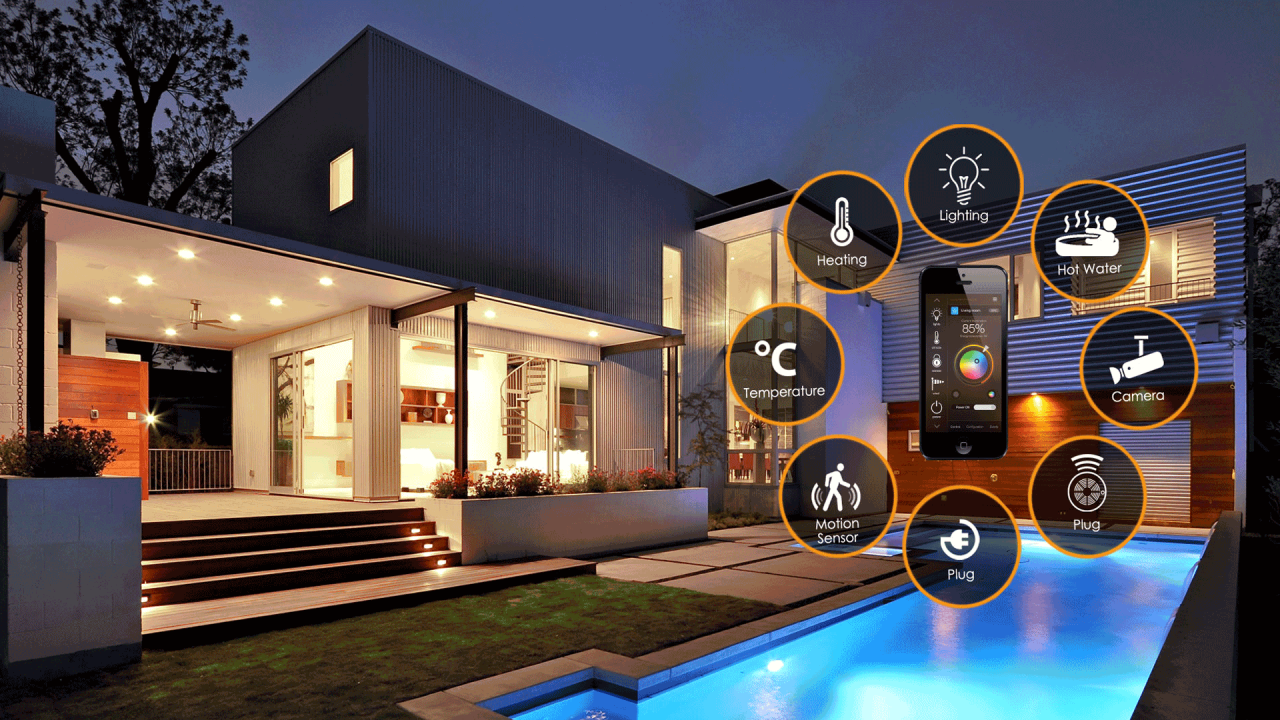 Enhance your home’s protection and convenience with smart security systems. These advanced systems provide real-time monitoring, automated alerts, and remote access, empowering you to safeguard your property and loved ones with unparalleled efficiency.
Enhance your home’s protection and convenience with smart security systems. These advanced systems provide real-time monitoring, automated alerts, and remote access, empowering you to safeguard your property and loved ones with unparalleled efficiency.
Smart Security Devices
Smart security systems comprise a range of devices designed to determine crime and provide comprehensive protection. These include:
- Motion sensors:
Detect movement within your home, triggering alerts and activating security measures.
- Surveillance cameras:
Provide real-time video surveillance, allowing you to monitor your property remotely and record any suspicious activity.
- Smart locks:
Replace traditional locks with digital locks that can be controlled remotely, granting access to authorized individuals and preventing unauthorized entry.
Integration with Home Automation Systems
Smart security systems can be seamlessly integrated with home automation systems, creating a comprehensive home management solution. This integration allows you to:
- Control security devices remotely using your smartphone or voice assistant.
- Automate security measures, such as arming the system when you leave and disarming it when you return.
- Receive alerts and notifications on your mobile device, keeping you informed about any security breaches or suspicious activity.
Customization for Unique Needs
Smart security systems can be customized to meet the unique needs of different homes and users. Factors to consider include:
- Property size and layout:
Determine the number and placement of security devices required.
- Lifestyle and habits:
Consider your daily routine and specific security concerns to tailor the system accordingly.
- Budget:
Smart security systems vary in cost, so it’s important to set a budget and choose a system that meets your needs and financial constraints.
Potential Drawbacks and Limitations
While smart security systems offer significant benefits, there are potential drawbacks and limitations to consider:
- Cost:
Smart security systems can be more expensive than traditional security systems, especially when installing multiple devices.
- Privacy concerns:
Some smart security devices collect and transmit data, raising concerns about privacy and data security.
- Reliability:
Smart security systems rely on Wi-Fi and internet connectivity, which can be susceptible to outages or disruptions.
Recommendations for Choosing and Installing
To ensure optimal performance and peace of mind, consider the following recommendations when choosing and installing a smart security system:
- Research and compare systems:
Read reviews, consult with security professionals, and compare features and costs of different systems to find the best fit for your needs.
- Choose reliable devices:
Opt for smart security devices from reputable manufacturers with a proven track record of reliability and security.
- Install properly:
Follow the manufacturer’s instructions carefully and ensure all devices are securely installed and configured.
- Test regularly:
Regularly test your smart security system to ensure it’s functioning properly and responding to alerts as intended.
Smart Kitchen Appliances
Upgrade your kitchen with smart appliances that elevate convenience, efficiency, and safety. From refrigerators that track inventory and order groceries to ovens that can be controlled remotely, these innovative devices transform your culinary experience.
Convenience and Efficiency
- Remote control and scheduling via home automation systems, allowing you to manage your kitchen from anywhere.
- Automated adjustments based on load, like dishwashers that optimize water usage and ovens that adjust cooking times.
- Voice control compatibility with smart home assistants, enabling hands-free operation and seamless integration with other smart devices.
Safety Enhancements
- Leak detection in refrigerators and dishwashers, alerting you to potential issues before they become major problems.
- Automatic shut-off feature in ovens and stoves, providing peace of mind when you’re away from home.
- Remote monitoring of appliances, allowing you to check on their status and make adjustments as needed, even when you’re not physically present.
Potential Drawbacks
- Cost: Smart kitchen appliances can be more expensive than traditional models.
- Privacy concerns: Some appliances may collect data on your usage patterns.
- Reliability issues: As with any technology, smart kitchen appliances can experience occasional glitches or malfunctions.
The Future of Smart Kitchen Appliances
The future of smart kitchen appliances holds exciting possibilities, including advancements in:
- Artificial intelligence (AI) integration, enabling appliances to learn your preferences and adapt to your cooking habits.
- Improved connectivity and interoperability, allowing seamless communication between all your smart kitchen devices.
- Sustainability features, such as energy-saving modes and water conservation technologies, make your kitchen more eco-friendly.
Smart Window Treatments
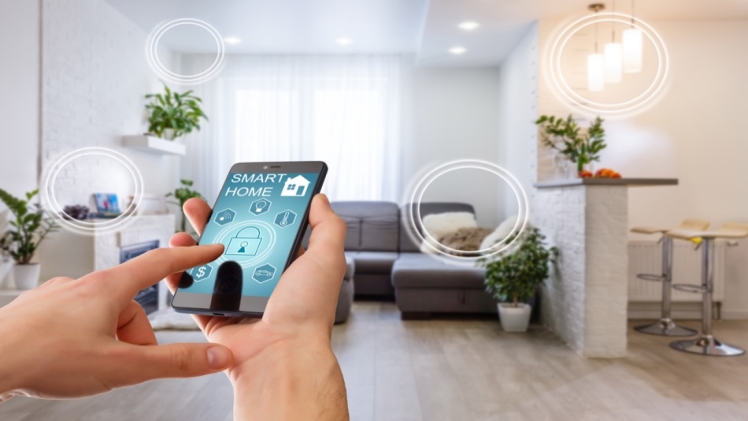 Transform your home with the convenience, energy efficiency, and enhanced privacy of smart window treatments. These innovative solutions offer a range of benefits, from automated operation to customizable lighting scenes.
Transform your home with the convenience, energy efficiency, and enhanced privacy of smart window treatments. These innovative solutions offer a range of benefits, from automated operation to customizable lighting scenes.
Motorized Blinds, Curtains, and Shades
Experience the ease of motorized window treatments that open, close, and adjust with the touch of a button or voice command. These systems feature sleek designs and whisper-quiet operation, providing seamless integration into any décor.
Integration with Home Automation Systems
Connect your smart window treatments to your home automation system for ultimate convenience. Schedule blinds to open at sunrise, adjust curtains to create the perfect ambiance for movie nights, or control them remotely from your smartphone.
Custom Lighting Scenes
Create customized lighting scenes that enhance your mood and productivity. Smart window treatments allow you to fine-tune the amount of natural light entering your home, creating the ideal atmosphere for any occasion.
Enhanced Privacy
Protect your privacy with smart window treatments that can be programmed to close automatically when you’re away or at night. Some systems even feature privacy modes that allow you to see out while blocking the view from outside.
Tips for Choosing Smart Window Treatments
- Consider your lifestyle and needs: Determine the level of automation, privacy, and light control you desire.
- Match the style to your décor: Choose window treatments that complement your existing design aesthetic.
- Research different brands and features: Compare options from reputable manufacturers to find the best fit for your budget and requirements.
- Consider installation costs: Factor in the cost of professional installation, if necessary, to ensure proper functionality.
- Read reviews and seek recommendations: Gather insights from other users to make informed decisions.
Smart Irrigation Systems
Smart irrigation systems are designed to optimize water usage and save time by automating the watering of your lawn and garden. These systems use sensors to monitor soil moisture levels, weather conditions, and plant needs, adjusting the watering schedule accordingly. There are various types of smart irrigation systems available, including:
- Wi-Fi-connected systems:
These systems connect to your home Wi-Fi network and can be controlled remotely using a smartphone app. They allow you to set watering schedules, monitor water usage, and receive alerts about potential issues.
- Sensor-based systems:
These systems use sensors to detect soil moisture levels and adjust the watering schedule based on the readings. They are typically less expensive than Wi-Fi-connected systems but offer less remote control functionality.
- Weather-based systems:
These systems use weather data to adjust the watering schedule based on predicted rainfall and temperature. They are ideal for areas with unpredictable weather patterns.
Smart irrigation systems can be integrated with home automation systems, allowing you to control them alongside other smart devices in your home. This integration enables you to create automated watering schedules based on your daily routine, vacation schedules, and other factors, maximizing convenience and efficiency.
Smart Entertainment Systems
Enhance your entertainment experience with smart entertainment systems that bring convenience, control, and immersive experiences to your living space. These systems integrate cutting-edge technologies, such as voice assistants, AI algorithms, and wireless connectivity, allowing you to control your entertainment effortlessly.
Smart TVs
Smart TVs offer a wide range of features, including:
- Voice control with virtual assistants like Alexa or Google Assistant
- Access to streaming services like Netflix, Hulu, and Amazon Prime Video
- Built-in soundbars for enhanced audio
- AI-powered content recommendations tailored to your preferences
Smart Sound Systems
Smart sound systems provide immersive audio experiences, with features such as:
- Multi-room audio systems that allow you to enjoy music throughout your home
- Voice-activated music control and playlist creation
- High-quality speakers for crystal-clear sound
Smart Home Integration
Smart entertainment systems can seamlessly integrate with your home automation system, allowing you to:
- Control your entertainment devices with voice commands or through a central hub
- Set up routines to automatically turn on the TV or play music when you enter a room
- Monitor and control your entertainment system remotely via a mobile app
Smart Home Hubs
Smart home hubs act as the central nervous system of your smart home, connecting various smart devices and enabling them to communicate with each other seamlessly. They serve as a central point of control, allowing you to manage and automate your smart home devices from a single interface.
Popular Smart Home Hubs
Some popular smart home hubs include:
- Amazon Echo Plus
- Google Nest Hub
- Apple HomePod mini
- Samsung SmartThings Hub
- Hubitat Elevation
These hubs offer a wide range of capabilities, including:
- Device connectivity: Hubs can connect to various smart devices, including lights, thermostats, security systems, and more.
- Centralized control: They provide a single interface to control all your connected devices, making it easy to manage your smart home.
- Automation: Hubs allow you to create rules and schedules to automate tasks, such as turning on lights at sunset or adjusting the thermostat based on your presence.
- Voice control: Many hubs support voice control through virtual assistants like Alexa, Google Assistant, or Siri, enabling you to control your smart home with your voice.
Benefits of Using Smart Home Hubs
There are numerous benefits to using smart home hubs:
- Convenience: Hubs make it easy to control your smart home from one place, eliminating the need to manage multiple apps or devices.
- Efficiency: Automation features can help you save energy, reduce costs, and streamline your daily routines.
- Enhanced security: Some hubs offer advanced security features, such as motion detection and intruder alerts, providing peace of mind.
- Customization: Hubs allow you to tailor your smart home to your specific needs and preferences.
- Future-proofing: Smart home hubs are designed to be compatible with a wide range of smart devices, ensuring your system can adapt to future advancements.
Energy Monitoring Devices
Energy monitoring devices are valuable tools that provide real-time insights into energy consumption, enabling users to make informed decisions about their energy usage and optimize their energy efficiency. These devices offer a range of benefits, including:
-
- -*Reduced energy consumption
By tracking energy usage, users can identify areas where they are consuming excessive energy and take steps to reduce their consumption. This can lead to significant savings on energy bills.
- -*Reduced energy consumption
-*Improved energy efficiency
Energy monitoring devices can help users identify and address inefficiencies in their energy systems, such as poorly insulated homes or inefficient appliances. By addressing these inefficiencies, users can improve their overall energy efficiency and reduce their energy footprint.
-*Increased awareness of energy usage
Energy monitoring devices provide users with a clear and concise view of their energy consumption, which can lead to increased awareness of their energy usage patterns and a greater understanding of how their actions impact their energy consumption.
-*Enhanced comfort and convenience
Energy monitoring devices can be integrated with home automation systems to provide users with remote control over their energy consumption. This can enhance comfort and convenience by allowing users to adjust their energy usage from anywhere, at any time. There are a variety of energy monitoring devices available on the market, each with its own unique features and capabilities. Some of the most common types of energy monitoring devices include:
-
- -*Whole-house energy monitors
These devices track the total energy consumption of a home or building. They are typically installed in the electrical panel and provide real-time data on energy usage.
- -*Whole-house energy monitors
-*Circuit-level energy monitors
These devices track the energy consumption of individual circuits within a home or building. They are typically installed in the electrical panel and provide detailed data on the energy usage of specific appliances and systems.
-*Plug-in energy monitors
These devices are plugged into individual appliances or outlets and track the energy consumption of those devices. They are a cost-effective way to monitor the energy usage of specific appliances and identify areas where energy consumption can be reduced. Energy monitoring devices can be integrated with home automation systems to provide users with even greater control over their energy consumption. This integration allows users to:
-
- -*Remotely monitor energy usage
Users can access their energy monitoring data from anywhere, at any time, using a smartphone, tablet, or computer.
- -*Remotely monitor energy usage
-*Set energy usage goals
Users can set energy usage goals and track their progress towards achieving those goals.
-*Receive alerts when energy usage exceeds set limits
Users can receive alerts when their energy usage exceeds set limits, allowing them to take corrective action and avoid costly energy bills. Energy monitoring devices can be used in a variety of settings, including residential, commercial, and industrial. In residential settings, energy monitoring devices can help homeowners reduce their energy consumption and save money on their energy bills. In commercial settings, energy monitoring devices can help businesses optimize their energy usage and reduce their operating costs. In industrial settings, energy monitoring devices can help manufacturers identify and address inefficiencies in their energy systems, leading to improved productivity and reduced energy costs. When selecting an energy monitoring device, it is important to consider the following factors:
-
- -*Accuracy
The accuracy of an energy monitoring device is determined by its ability to measure energy consumption accurately. It is important to select a device that is accurate within a reasonable margin of error.
- -*Accuracy
-*Data granularity
The data granularity of an energy monitoring device refers to the frequency at which it records energy consumption data. The higher the data granularity, the more detailed the energy consumption data will be.
-*Connectivity options
Energy monitoring devices can be connected to a variety of devices, including smartphones, tablets, computers, and home automation systems. It is important to select a device that is compatible with the devices you want to use it with. Energy monitoring devices are a cost-effective way to reduce energy consumption and save money on energy bills. The potential return on investment for an energy monitoring device can be significant, especially for homes and businesses that consume a lot of energy. The payback period for an energy monitoring device can be as short as a few months, depending on the cost of the device and the amount of energy saved. The latest trends and advances in energy monitoring technology include the use of artificial intelligence and machine learning for data analysis and optimization. These technologies can help users identify and address inefficiencies in their energy usage patterns and optimize their energy consumption. As these technologies continue to develop, energy monitoring devices will become even more powerful and effective tools for reducing energy consumption and saving money on energy bills.
Smart Smoke and Carbon Monoxide Detectors
Smart smoke and carbon monoxide detectors offer significant advantages over traditional detectors, enhancing safety and convenience in your home. They provide real-time monitoring, remote alerts, and integration with home automation systems, ensuring your family’s well-being.
Capabilities and Features
- Real-time Monitoring:
Smart detectors continuously monitor air quality, detecting even trace amounts of smoke or carbon monoxide.
- Remote Alerts:
When a hazard is detected, smart detectors send instant notifications to your smartphone, allowing you to respond quickly from anywhere.
- Interconnected Systems:
Multiple detectors can be interconnected, creating a comprehensive safety network that alerts all devices in the event of an emergency.
- Voice Control:
Integrate smart detectors with voice assistants like Alexa or Google Assistant for hands-free operation.
- Mobile App Control:
Monitor detector status, silence false alarms, and adjust settings remotely through a dedicated mobile app.
Integration with Home Automation Systems
Smart smoke and carbon monoxide detectors seamlessly integrate with home automation systems, providing additional layers of safety and convenience. For example, they can:
- Trigger Emergency Response:
When a hazard is detected, smart detectors can automatically trigger actions such as unlocking doors for first responders or turning on lights to illuminate escape routes.
- Remote Monitoring and Control:
Monitor detector status and receive alerts remotely, even when you’re away from home.
- Integration with Smart Lighting:
Smart detectors can trigger smart lights to flash or change color in case of an emergency, providing visual cues for occupants.
Smart Garage Door Openers
Smart garage door openers offer convenience, security, and remote access to your garage. They allow you to open and close your garage door from anywhere using your smartphone or voice commands, eliminating the need for fumbling with keys or remotes.
Integration with Home Automation Systems
Smart garage door openers seamlessly integrate with home automation systems like Amazon Alexa, Google Home, and Apple HomeKit. This integration enables you to control your garage door using voice commands, set schedules, and receive notifications when the door is opened or closed.
Smart Health Devices: Smart Home Upgrades For Convenience And Efficiency
Integrating smart health devices into your home automation system can revolutionize your healthcare routine, offering convenience, proactive monitoring, and personalized care. These devices track vital health metrics, provide real-time feedback, and connect with medical professionals, empowering you to manage your health proactively.
Monitoring and Tracking
Smart health devices monitor various health parameters, including heart rate, blood pressure, glucose levels, and sleep patterns. By tracking these metrics over time, they create a comprehensive health profile, enabling early detection of potential health issues. This empowers you to take preventive measures and seek timely medical attention.
Personalized Care, Smart home upgrades for convenience and efficiency
Smart health devices offer personalized healthcare experiences tailored to your unique needs. They can adjust medication reminders, provide tailored fitness recommendations, and monitor specific health conditions. By collecting and analyzing data, these devices can create personalized health plans, helping you achieve your health goals effectively.
Integration with Home Automation
Integrating smart health devices with home automation systems further enhances their functionality. For example, smart lights can change color to indicate abnormal heart rate readings, and smart speakers can remind you to take medications or connect you with healthcare providers. This integration creates a seamless and comprehensive healthcare ecosystem, providing a holistic approach to your well-being.
Smart Home Decor
Smart home decor seamlessly blends aesthetics with technology, empowering homeowners with enhanced convenience and efficiency. From intelligent lighting to automated window treatments, smart home decor transforms living spaces into dynamic and responsive environments.
Smart Lighting
Smart lighting systems offer a variety of benefits, including energy efficiency, personalized ambiance, and remote control. Users can adjust lighting intensity, color temperature, and schedules to create the perfect atmosphere for any occasion.
Smart Window Treatments
Motorized window treatments provide effortless control over natural light, privacy, and energy consumption. Smart shades can be programmed to open and close automatically based on time of day, weather conditions, or even voice commands.
SmartFurniture
Smart furniture goes beyond comfort, offering additional functionality and convenience. Reclining sofas can be controlled via smartphone apps, allowing users to adjust the position and firmness with ease. Smart beds monitor sleep patterns and automatically adjust the firmness and temperature for optimal comfort.
Integration with Home Automation Systems
Smart home decor seamlessly integrates with home automation systems, enabling homeowners to create automated routines and scenarios. For example, smart lighting can be linked to motion sensors to automatically illuminate pathways at night, while smart window treatments can be synchronized with weather forecasts to adjust accordingly.
Last Point
As we reach the culmination of our exploration into smart home upgrades for convenience and efficiency, it is evident that the future of home living lies in the seamless integration of technology and comfort. By embracing these innovative solutions, you not only elevate your daily life but also make a significant contribution to sustainability and energy conservation. Invest in a smart home today, and unlock a world of possibilities where convenience, efficiency, and peace of mind reign supreme.


